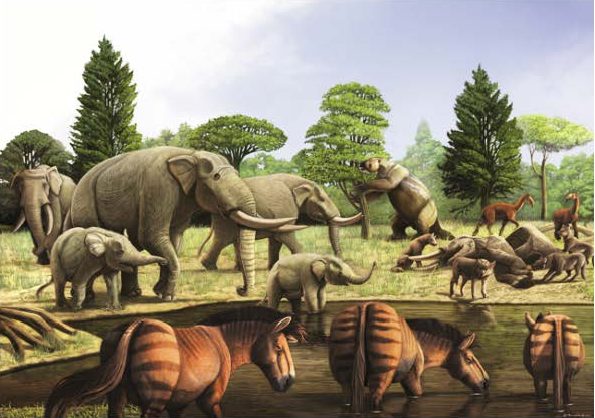Quaternary Megafauna in South America

AUTHORS
Dimila Mothé
Grupo de Estudos em Megafauna, Universidade Federal do Estado do Rio de Janeiro, Rio de Janeiro, Brazil
dimila.mothe@gmail.com
Rodrigo Parisi Dutra
Pontifícia Universidade Católica de Minas Gerais, Minas Gerais, Brazil
parisidutra@gmail.com
Juan Sebastian Escobar Florez
Universidad ICESI, Valle del Cauca, Colombia
Programa de Pós-graduação em Zoologia, Museu Nacional, Rio de Janeiro, Brazil
Grupo de Estudos em Megafauna, Universidade Federal do Estado do Rio de Janeiro, Rio de Janeiro, Brazil
juan.escobar11@u.icesi.edu.co
Abstract
In recent decades, the adoption of novel methodological approaches has led to significant advances in the understanding of the taxonomy, systematics, and dietary paleoecology of South American Quaternary megafauna. Despite these developments, however, the extinction of these species during the Holocene, along with their geographic and temporal dynamics and ecological interactions, remain fields with gaps and challenges. Key issues, such as biogeographical patterns within the Great American Biotic Interchange, intraspecific variation, ecological requirements, paleobiology, and interactions with prehistoric human populations, continue to lack comprehensive understanding. This thematic session aims to consolidate recent contributions to the study of Pleistocene/Holocene mammalian megafauna in South America, emphasizing new approaches and recent findings. Additionally, we will address the conceptual and methodological gaps that still limit our understanding of megafauna extinction and adaptation processes, exploring how these phenomena can be more effectively approached through emerging lines of research. It is hoped that this thematic session will promote interdisciplinary dialogue, foster the exchange of innovative ideas, and provide guidance for future research endeavors that may reshape South American paleontology and its role in advancing global knowledge of Quaternary extinctions.
